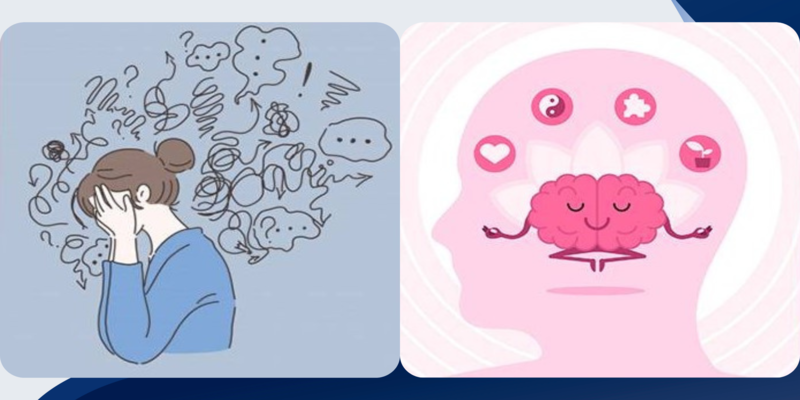Mentality towards mental health

What is mental health? Do we, as a community, take mental health seriously? The more questions raised, the clearer it gets that those suffering, do it so in silence because they fear the repercussions our collective response garners. If we compare the Western world’s attitude towards mental illness, there has been a significant improvement over the years. If you had the misfortune to be mentally afflicted in the early 18th century, the medical options you had ranged from peculiar to downright inhumane. Patients were locked in asylums and restrained from escaping with excessive use of straitjackets, manacles and leather wristlets. Leaning more towards segregation than treatment. Due to lack of funding and interest from the ruling aristocracy, patients were shunned to the margins of society. Out of sight, out of mind, and out of touch. Early treatment was based on the assumption that mental issues had a demonic cause as opposed to neurological. Purging, blistering, vomiting, bleeding — all were applied to rid the body and mind of its demonic hosts. In the same vein, shock therapy was used to expel the body of the spirits possessing it.
Today, the Western attitude towards mental illness and its victims is far more humane and empathetic, with the treatment methods rooted in science, research and analytics. Though there is still more to be done, a cultural shift is taking place, signalling that both the physical and mental are two equally important pillars of a properly functioning society. On the other side of the globe in India, the situation is different. According to the World Health Organization (WHO), there are currently, an estimated 56 million people suffering from depression with another 38 million from anxiety disorders. A study by The Live Love Laugh Foundation tried to pinpoint the attitude of an average Indian towards mental illness and its bearers. As many as 68% of the respondents agreed that people with mental illnesses should not be given any responsibility. While 60% felt that mentally unhealthy people should be segregated from healthy people in fear of contamination. These two statistics highlight the general outlook of Indians towards the mentally ill. There is disdain, apathy and a need to detach themselves from those they deem unfit for the society.
The fact that most people do not want the mentally ill to take up any responsibilities, shows a lack of trust in their abilities. What this does, is that it makes a person who is suffering, reluctant to seek help. The victim then opts to either repress his or her emotions or relies on self-medication via drugs. A person suffering from depression or anxiety is already in a vulnerable mental disposition. Further entangling the situation through prolonged repression and ignoring the issue can cause problems with memory and aggression. Pent-up emotions, when pushed deeper down, can erupt in intense, unpredictable ways. Moreover, 45% think that people suffering from mental illness are always violent and that interacting with a mentally unhealthy person could lead to the deterioration of a healthy person’s state. Instead of physically restraining them, it seems that we have adopted a separatist attitude towards the mentally ill. It is instilled in the words that are used to describe them and the actions the individuals fail to take on behalf of their well-being and protection.
Hong Kong, with its relatively high-income status as compared to India, should be doing better in its approach. However, that does not seem to be the case. With student suicides at an all-time high, Hong Kong has also seen a regression in its mental health quality. A survey conducted in 2016, showed that 40% of students studying in Secondary One are at risk of committing suicides. A study, similar to that done in India, reveals the misconceptions and lack of awareness is also present in Hong Kong. Around 40% of the respondents felt that lack of self-discipline and will-power contributes to the deterioration of mental health.
With the recent spike in student suicides, the public has never been more aware of this crisis. In response, major governmental agencies such as the Department of Health, Hospital Authority, Education Bureau and the Food and Health Bureau, in combination with other stakeholders such as NGOs, parents, teachers and students, are working together to tackle this issue head-on. According to the Mental Health Review Report published by the Food and Health Bureau, the plan to improve mental health services for adolescents will revolve around four key areas —research and studies, education and promotion, assessment, intervention and support, and capacity building. In order to make it effective, the focus needs to be on adolescence. When a young person is ashamed or fearful of talking about these issues with those around him or her, they are set on a lonely path that winds its way down into the waiting clutches of drug abuse. The first few puffs, snorts or sips takes the edge off and offers a break from the cluttered mess that is their mind. Not long after, the fun is gone and is replaced with a monotonous routine of drug abuse that they can’t overcome. The young mind, already beset by a chemical imbalance, finds itself stuck in a quagmire of substance abuse and societal neglect.
To break that cycle, a collective effort is required from all parties involved. A society’s response to an issue is directly proportional to the attitude of its people to that particular issue. We, as a community, need to dispel misconceptions and make it common knowledge that anybody, regardless of caste, creed and colour can be affected by an illness of the mind. Novelist Fyodor Dostoevsky said, “The degree of civilisation in a society can be judged by entering its prisons.” Perhaps, we might be able to judge the humanity of a civilisation by looking at how it treats those stuck in the prison of their own minds.






